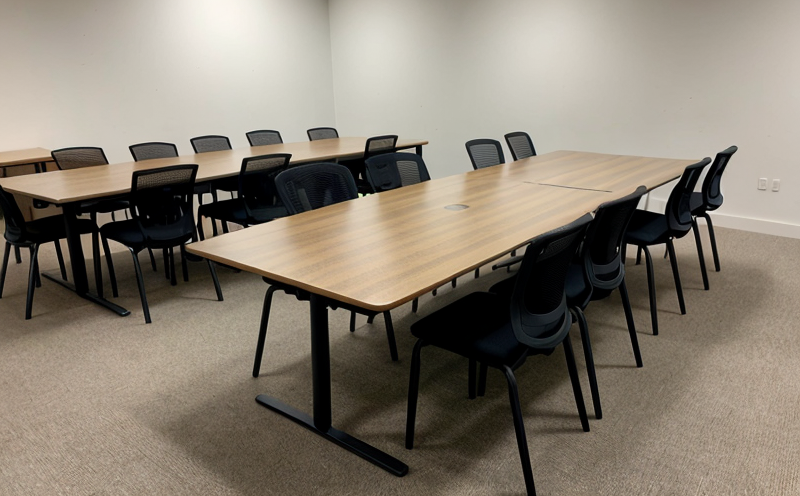ISO 4211-2 Tables Determination of Impact Strength Testing
The determination of impact strength in tables is crucial for ensuring that furniture meets both performance and safety standards. This test evaluates the toughness and durability of table materials under dynamic loading conditions, which is particularly important for furniture used in public spaces or high-intensity environments.
Impact strength testing helps to identify any potential weaknesses in the materials used during manufacturing. The results are essential for quality control departments and R&D teams who aim to enhance product performance and safety. Compliance officers can use these test results to ensure that products meet regulatory requirements and industry standards, such as ISO 4211-2.
The process involves subjecting a specimen cut from the table top to controlled impact using an impact tester. The energy absorbed by the material during this impact is measured in joules (J). This value provides valuable insights into the resilience of the table surface, which can influence its longevity and usability under real-world conditions.
The test setup typically includes a pendulum impact testing machine that delivers controlled impacts onto the specimen. The specimen must be prepared according to specific dimensions outlined in ISO 4211-2, ensuring consistency across different samples. This standard also specifies the type of materials suitable for this testing method and the range of temperatures at which tests can be performed.
Understanding the impact strength of table surfaces is particularly relevant for sectors like hospitality, healthcare, and education where furniture must withstand frequent use by multiple users over extended periods. In these environments, even minor defects in material quality or construction could lead to premature failure or injury risks. By incorporating ISO 4211-2 compliant testing into their quality assurance processes, manufacturers can significantly reduce such risks.
Moreover, the results from this test help inform design decisions regarding surface treatments and material selection. For instance, if a particular type of wood or laminate consistently demonstrates poor impact resistance, it might be replaced with an alternative that offers better performance. Similarly, insights gained through repeated testing can guide improvements in manufacturing techniques to enhance overall product quality.
Impact strength tests are just one aspect of comprehensive furniture testing but play a vital role in ensuring the reliability and safety of table surfaces. When combined with other assessments such as durability under cyclic loading or static load capacity, they provide a holistic view of how well-designed pieces will perform over time.
Applied Standards
| Standard Code | Description |
|---|---|
| ISO 4211-2 | Determination of impact strength - Part 2: Testing of rigid articles (e.g., tables) |
Scope and Methodology
| Key Elements | Description |
|---|---|
| Test Specimen Preparation | The specimen should be cut from the table top following specified dimensions in ISO 4211-2. |
| Pendulum Impact Tester Settings | The pendulum height, angle of impact, and other parameters must adhere to the requirements set out by ISO 4211-2. |
Competitive Advantage and Market Impact
- Ensures compliance with international standards, enhancing brand reputation.
- Provides valuable data for continuous improvement in product design and manufacturing processes.
- Aids in meeting regulatory requirements, thereby avoiding costly penalties or recalls.
- Sets a benchmark for quality that can differentiate products in competitive markets.





